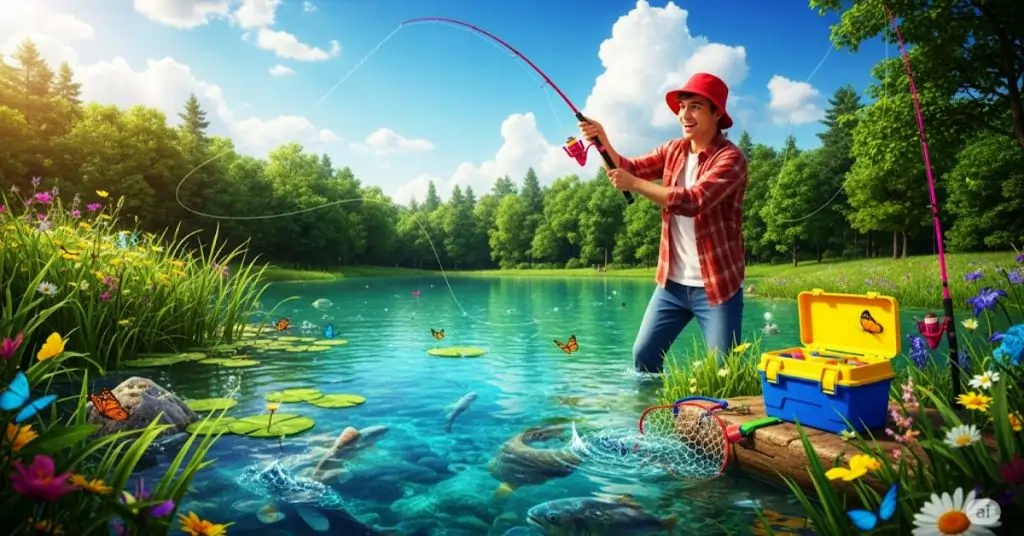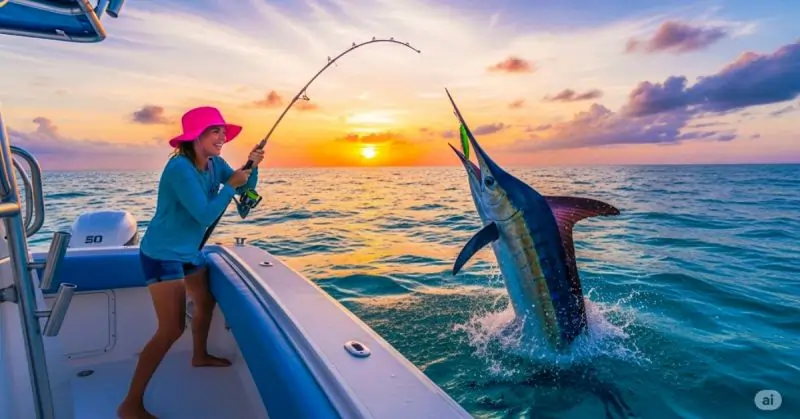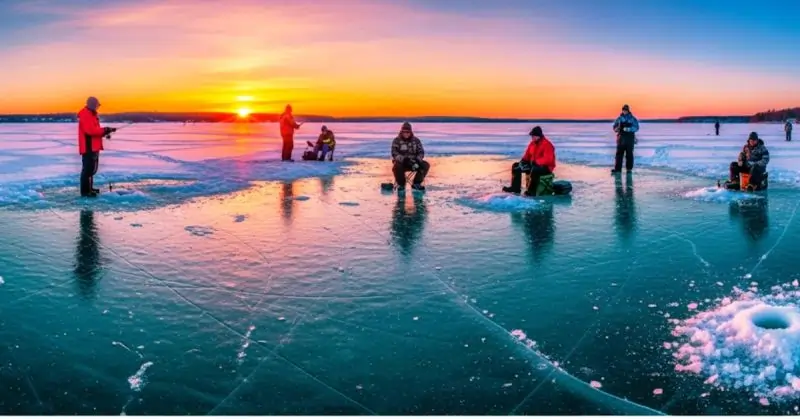Mastering Fishing Techniques: A Complete Guide for Anglers of All Levels
Fishing is one of the most rewarding outdoor activities, offering relaxation, excitement, and the thrill of the catch. Whether you’re a beginner or an experienced angler, refining your fishing techniques can significantly improve your success rate.
In this ultimate guide, we’ll cover the best fishing techniques for different environments, species, and skill levels. By the end, you’ll know how to adapt your approach to catch more fish—every single time.
1. Understanding Basic Fishing Techniques

Before diving into advanced methods, let’s cover the fundamentals every angler should know.
A. Casting Techniques
- Overhead Cast – The most common method; great for distance and accuracy.
- Sidearm Cast – Useful in windy conditions or under low-hanging trees.
- Pitching & Flipping – Ideal for precision in heavy cover (great for bass fishing).
B. Retrieval Methods
- Slow Retrieve – Works well for lethargic fish (e.g., cold-water bass).
- Fast Retrieve – Triggers reaction strikes from aggressive fish (e.g., pike, trout).
- Stop-and-Go – Mimics injured prey, enticing strikes.
2. Best Freshwater Fishing Techniques

A. Bass Fishing Techniques
- Texas Rig – Weedless setup perfect for heavy cover.
- Drop Shotting – Finesse technique for finicky bass in deep water.
- Topwater Fishing – Exciting strikes at dawn/dusk (try poppers or frogs).
B. Trout Fishing Techniques
- Fly Fishing – Best for streams (use dry flies, nymphs, or streamers).
- Drift Fishing – Let bait naturally flow with the current.
- PowerBait & Spinners – Effective in stocked trout waters.
C. Catfish Fishing Techniques
- Bottom Fishing – Use stink bait or cut bait on a slip-sinker rig.
- Jug Fishing – Passive method using floating jugs as bait holders.
- Night Fishing – Catfish are more active after dark.
3. Saltwater Fishing Techniques

A. Surf Fishing
- Sand Spike & Bait Setup – Use clams, shrimp, or cut bait.
- Reading Waves – Fish troughs and sandbars where predators hunt.
B. Deep-Sea Fishing
- Trolling – Drag lures or bait behind a moving boat (great for tuna & marlin).
- Jigging – Vertical technique for bottom-dwelling fish (snapper, grouper).
C. Pier Fishing
- Float Rig – Keeps bait suspended at the right depth.
- Sabiki Rig – Small hooks to catch baitfish like sardines.
4. Mastering Ice Fishing: Essential Cold-Weather Techniques

Ice fishing transforms frozen lakes into hidden hotspots for anglers brave enough to embrace the chill. To consistently land fish through the ice, you’ll need the right gear, techniques, and a bit of winter wisdom. Here are the top ice fishing methods to help you conquer the hard water this season.
1. Jigging: The Art of Lure Manipulation
Jigging is the most hands-on ice fishing technique, perfect for triggering bites from panfish, walleye, and trout. Use small, flashy jigs (1/16 to 1/8 oz) tipped with live bait like minnow heads, wax worms, or spikes. The key is subtle, rhythmic movements—lift the rod tip 6–12 inches, then let the lure flutter down. Pause frequently, as strikes often come on the drop. For finicky fish, try glow-in-the-dark or UV-enhanced jigs in low-light conditions.
2. Tip-Ups: Set It and (Almost) Forget It
When you want to cover more water, tip-ups are a game-changer. These passive devices suspend live bait (like shiners or suckers) beneath the ice while signaling strikes with a flag. Ideal for pike, walleye, and perch, tip-ups let you fish multiple holes simultaneously. Place them near drop-offs, weed edges, or known structure. For trophy pike, use quick-strike rigs to reduce deep-hooking and increase survival rates for catch-and-release.
3. Sonar & Flashers: Your Under-Ice Eyes
Cutting through the ice blindly is a guessing game—sonar and flashers remove the mystery. These devices show real-time depth, structure, and fish activity below you. A flasher (like Vexilar or Marcum) displays fish as they approach your lure, allowing instant adjustments. Modern LCD sonar units (e.g., Garmin LiveScope) even reveal your jig’s movement and fish reactions in stunning detail. Drill test holes to scout for active schools before settling in.
Bonus Pro Tips for Ice Fishing Success:
✔ Stay Mobile – If fish aren’t biting, drill new holes every 20–30 minutes.
✔ Lighten Up – Use 2–4 lb fluorocarbon line for clear-water species like trout.
✔ Watch the Weather – Fish feed aggressively before storms or during stable high-pressure systems.
✔ Safety First – Always check ice thickness (4+ inches for walking) and carry ice picks.
Final Word
Ice fishing isn’t just about enduring the cold—it’s about outsmarting fish in their winter hideouts. Whether you’re jigging for crappie, setting tip-ups for pike, or scanning with sonar, these techniques will put more fish on the ice. Now bundle up, grab your auger, and get ready for an adventure where every flag pop or sonar blip could mean your next trophy. Tight lines! ❄️🎣
5. Advanced Fishing Techniques for Expert Anglers
For seasoned fishermen looking to elevate their game, mastering advanced fishing techniques can mean the difference between a good day and an unforgettable one. These high-skill methods require precision, patience, and adaptability—but the payoff is worth it. Here’s a breakdown of three elite strategies to add to your arsenal.
1. Sight Fishing – The Ultimate Challenge
Sight fishing is about spotting and stalking visible fish, commonly practiced in shallow flats for species like redfish, bonefish, and permit. Polarized sunglasses are essential to cut glare and spot movement. Use lightweight tackle and natural presentations—such as soft plastics or crab flies—to avoid spooking your target. Accuracy and stealth are critical; one false cast can send fish fleeing.
2. Kayak Fishing – Stealth Meets Strategy
Kayaks offer a silent, low-profile approach, perfect for targeting skittish fish in shallow or pressured waters. Master anchorless drifting to maintain position without noise, and use flipping sticks or light spinning gear for precision casting. Kayak anglers excel in backcountry spots where boats can’t reach, making it ideal for snook, bass, and even inshore saltwater species.
3. Fly Fishing for Saltwater Giants
Taking fly fishing to the ocean is a true test of skill, targeting powerful species like tarpon, bonefish, and striped bass. Saltwater fly rigs require heavy-duty rods (8-12 wt.) and fast-sinking lines. Practice double-haul casting to cut through wind, and learn to “lead” fast-moving fish. The thrill of hooking a 100-pound tarpon on a fly rod is unmatched.
Pro Tip: Record your outings with a GoPro to analyze and refine your technique.
These expert-level methods demand practice but deliver heart-pounding action. Ready to push your limits? The water’s waiting. 🎣
6. Seasonal Fishing Tips: How to Catch Fish Year-Round
Fishing success depends heavily on understanding seasonal patterns. Fish behavior changes with water temperature, daylight, and food availability. By adapting your techniques each season, you’ll maximize your catch rate. Here’s your ultimate guide to seasonal fishing tips for spring, summer, fall, and winter.
Spring: Target Shallow Waters for Spawning Fish
As temperatures rise, fish move into shallow waters to spawn. Bass, crappie, and bluegill become highly active near shorelines, docks, and vegetation. Use soft plastics, spinnerbaits, and jerkbaits to mimic baitfish. Focus on sunny areas where water warms fastest.
Summer: Fish Early Mornings & Late Evenings
Hot weather drives fish into deeper, cooler waters during midday. The best bites occur at dawn and dusk when oxygen levels are higher. Topwater lures work well for bass, while deep-diving crankbaits and drop shots help reach suspended fish. Night fishing can also be productive for catfish and walleye.
Fall: Capitalize on Aggressive Feeding
Fish bulk up before winter, making fall one of the best fishing seasons. Predatory species like bass, pike, and trout actively chase baitfish. Try fast-moving lures (crankbaits, swimbaits) near schooling fish. Look for baitfish activity near points and drop-offs.
Winter: Slow Down Your Presentation
Cold water slows fish metabolism, so a slow, subtle approach is key. Use jigs, hair rigs, and live bait with minimal movement. Ice anglers should focus on small jigs and tip-ups near deep structures.
Pro Tip: Always check local fishing reports for seasonal hotspots!
By following these seasonal fishing strategies, you’ll catch more fish year-round—no matter the weather. Tight lines! 🎣
7. Pro Tips to Improve Your Fishing Success
✅ Match the hatch – Use bait that mimics local prey.
✅ Pay attention to weather & tides – Fish are more active during changes.
✅ Stay stealthy – Avoid loud noises and shadows.
✅ Keep hooks sharp – A dull hook loses fish.
Fishing Techniques FAQ: Your Top Questions Answered
1. What’s the best fishing technique for beginners?
Answer: Start with basic spin casting using a Texas rig (for bass) or a bobber-and-worm setup (for panfish). These methods are easy to learn, require minimal gear, and work in most freshwater environments. As you gain confidence, try jigging or crankbait retrieves to expand your skills.
2. How do I choose the right lure for different fish species?
Answer: Match your lure to the fish’s natural prey:
Bass: Soft plastics (worms, craws), spinnerbaits, or topwater frogs.
Trout: Small spinners, spoons, or flies (like nymphs or dry flies).
Walleye: Jigs tipped with minnows or crankbaits in natural colors.
Pike/Musky: Large swimbaits, jerkbaits, or spoons for aggressive strikes.
3. Why am I not getting bites even with the right bait?
Answer: Common fixes include:
Adjust your retrieve speed (slow down in cold water, speed up in warm water).
Change lure colors (bright in murky water, natural in clear water).
Fish at optimal times (dawn/dusk for most species).
Check your hook sharpness—dull hooks miss strikes.
4. What’s the most effective ice fishing method?
Answer: Combine sonar (to locate fish) with jigging (for active fish) or tip-ups (for passive fishing). For panfish, use tiny tungsten jigs with wax worms. For pike/walleye, set tip-ups with live minnows near drop-offs
Final Thoughts
Mastering different fishing techniques will make you a versatile angler, ready for any fishing scenario. Whether you’re casting in freshwater, battling saltwater giants, or drilling holes in the ice, the right approach will put more fish on your line.
Now it’s your turn! Grab your gear, hit the water, and try these techniques. Tight lines! 🎣
